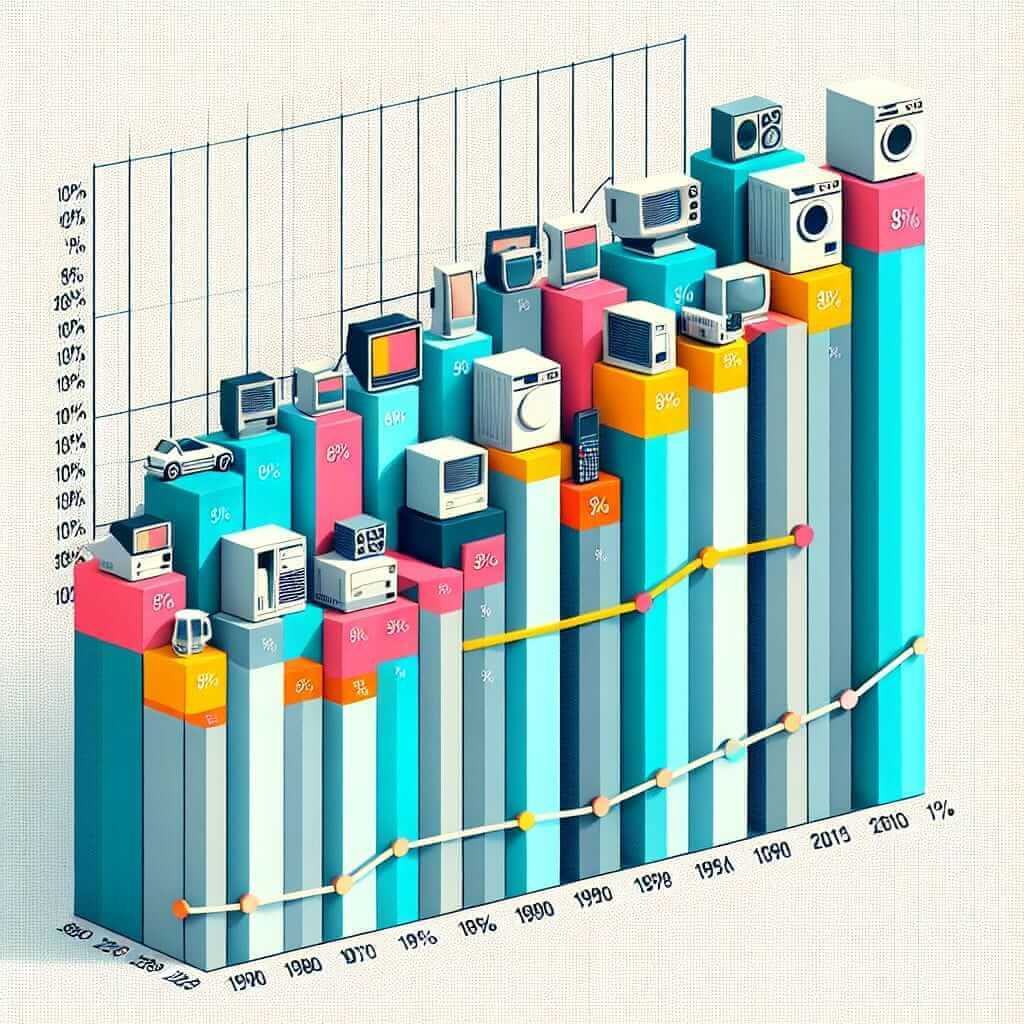In the realm of IELTS Writing Task 1, understanding the “subject” of the provided visual information (graph, chart, table, etc.) forms the bedrock of a high-scoring response. Accurately identifying the subject allows you to demonstrate your ability to interpret data, summarize key trends, and ultimately, showcase your English language proficiency. This article delves into the essence of identifying the subject in IELTS Writing Task 1, providing you with clear strategies and practical examples to refine your approach.
Nội dung bài viết
What Constitutes the “Subject” in IELTS Writing Task 1?
The “subject” refers to the central focus or theme conveyed by the visual data. It’s not merely the title of the graph or the labels on the axes. Instead, it encapsulates the overarching trend, comparison, or process that the visual aims to illustrate.
Imagine a line graph titled “Average Monthly Temperatures in London.” The subject isn’t simply “temperatures” or “London.” It’s more precise: the fluctuation of average monthly temperatures in London over a specific period.
Strategies for Identifying the Subject:
-
Analyze the Visual’s Components:
- Title: Provides a general idea but rarely the complete subject.
- Axes Labels: Indicate the type of data and units of measurement.
- Legend (if present): Explains different data sets within the visual.
- Data Trends: Identify patterns, changes, or comparisons.
-
Look for Keywords:
- Focus on nouns, verbs, and adjectives that highlight the main idea.
- For example, in a bar chart showing “Sales Figures for Different Products,” keywords like “sales,” “products,” and “comparison” are crucial.
-
Formulate a Clear Sentence:
Once you’ve analyzed the components and keywords, articulate a concise sentence that captures the essence of the visual. This sentence should be specific enough to guide your writing but not overly detailed.
Example:
Let’s apply these strategies to a sample IELTS Writing Task 1 question:
The graph below shows the percentage of households in the UK owning different types of consumer goods between 1980 and 2010. Summarize the information by selecting and reporting the main features, and make comparisons where relevant.

Identifying the Subject:
- Title: Provides a general idea – household ownership of consumer goods.
- Axes Labels: “Percentage of households” and “Years” – indicating a trend over time.
- Legend: Will list the different consumer goods.
- Data Trends: We’d expect to see increases or decreases in ownership percentages.
Subject Sentence: The bar graph illustrates the changing patterns of consumer goods ownership in UK households from 1980 to 2010.
Tips for Success:
- Practice Regularly: Analyze various IELTS Writing Task 1 visuals to hone your subject identification skills.
- Don’t Overcomplicate: Aim for clarity and conciseness in your subject sentence.
- Revise if Necessary: After drafting your report, revisit your subject sentence to ensure your writing aligns with the identified subject.
Conclusion:
Mastering the art of identifying the subject in IELTS Writing Task 1 is non-negotiable for achieving a high score. By employing analytical skills and a systematic approach, you can confidently interpret visual data and present a well-structured, coherent response that showcases your language proficiency to the examiners. Remember, practice makes perfect, so continue honing your skills, and success will be within your grasp.